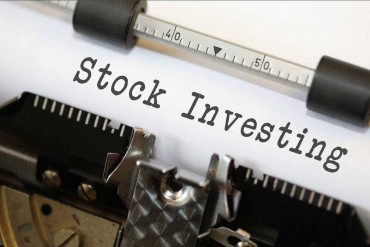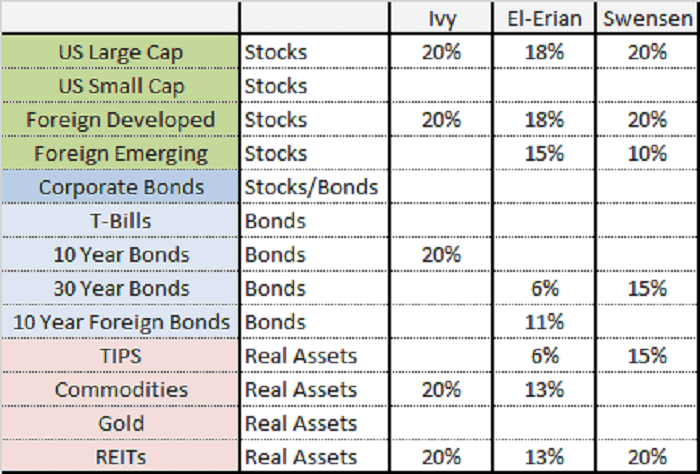
A portfolio of fewer than 10 stocks can be more volatile than a portfolio of 200 stocks and riskier. But it is able to produce greater wealth.
Concentrated stock portfolios are portfolios that hold a small number of different stocks. The aim is to reach a specific level of diversification. But it is different from diversified portfolios because concentrated stock portfolios can consist of less than 10 stocks. This kind of portfolio can increase the risks but at the same time, it increases potential gains. While we are broadly talking about the importance of portfolio diversification concentrated portfolios actually generate the highest returns. And if you examine the results of both, you’ll see that concentrated portfolios that include only a few stocks are better solutions for creating huge wealth.
How is that possible?
Concentrated portfolios also allow investors to be focused on a small number of investments but high-quality. Many famous and extremely successful investors made fortunes with concentrated stock portfolios.
We don’t want to neglect the importance of diversification. It’s the opposite. Diversification is by far the most important lesson that we can learn. Also, the importance of spreading money across different stocks and sectors isn’t doubtful and will significantly reduce risk. But a lot of investors don’t follow that advice and are growing their wealth as a result. Warren Buffett once said “diversification is a protection against ignorance” and what is interesting, data shows that concentrated stock portfolios generate more profits. Simply, they are better performers.
Disadvantages of diversification
Diversification has benefits but you’ll need a balance between risk-controls and returns. This highlights investors that diversify across concentrated stock portfolios rather than diversified. Diversified portfolios have a lot of market risk, anyone can confirm.
But, how much is proper?
All investors are faced with this question and it isn’t a simple one. If you have a concentrated stock portfolio you may experience the stressful event if you don’t understand the company you are investing in completely. However, if you are ready to explore and spend time to get to grasp the companies you want to buy, the concentrated stock portfolio might be a great choice and it can generate high returns.
But be careful, invest only in the companies that you believe you have an advantage. Concentrated stock portfolios aren’t necessarily risky but only if you are ready to work more. This means you have to be responsible for your investments and never neglect the dangers that may appear. You have to pay a lot of attention and spend time to be able to reduce the risk if you want to build a concentrated stock portfolio.
Diversified portfolios hold stocks of numerous companies.
It is between 40-75 stocks. Concentrated stock portfolios hold less than 25, and it is common to hold less than 10. For example, the structure of such portfolios means that you have 5 to 10 stocks which constitute over 50% of your overall investments. It is important to follow this structure because if you don’t follow these percentages and your portfolio holds under 40%, your portfolio will be diffused.
Diversification has some advantages. It can reduce the level of portfolio volatility and potential risk. When investments in one sector perform inadequately, other investments will offset losses. But you have to hold assets that are negatively correlated.
But diversification can have negative effects on your portfolio. That is a great disadvantage. A diversified portfolio can limit your potential gains and produce average returns. For example, you hold a few winning stocks but beside them, you hold 20 stocks with poor performances and they will reduce your overall gains.
Also, diversification requires to rebalance your portfolio. If you created a widely diversified portfolio you’ll have a problem monitoring and adjusting your investments. And if you don’t pay sufficient attention the risk may increase.
The benefits of a concentrated stock portfolios
Conventional thinking states that diversification reduces the overall risk of investing in stocks. And what is interesting, investors support that approach but, for some reason, avoid concentrated stock portfolios as too risky. It is understandable, but having too much can be bad.
But not all investors are opponents to concentrated stock portfolios. For example, Warren Buffet who advocates for a concentrated portfolio suggests: ‘‘An investor should act as though he had a lifetime decision card with 20 punches on it. With every investment decision, his card is punched, and he has one fewer available for the rest of his life.’’
How to build concentrated stock portfolios
It isn’t as hard as you may think. For example, buy stocks of companies you know well, stay focused on your main investment purpose, invest for long-term to gain the benefit of compounding. And, what is most important, research a lot to find the best stock to invest in.
When you invest in a limited number of companies you actually have a great opportunity to invest in high-quality companies. There is no need to compromise on quality. What you have to pay attention to? Be informed and buy the stock when it is priced below its worth when the market undervalues it. This gap will provide you significant and profitable upward potential.
Legendary John Maynard Keynes suggested investors hold concentrated investment portfolios. In 1938 he wrote:
1. A careful selection of a few investments (or a few types of investment) having regard to their cheapness in relation to their probable actual and potential intrinsic value over a period of years ahead and in relation to alternative investments at the time;
2. A steadfast holding of these in fairly large units through thick and thin, perhaps for several years, until either they have fulfilled their promise or it is evident that they were purchased on a mistake;
3. A balanced investment position, i.e., a variety of risks in spite of individual holdings being large, and if possible, opposed risks.”
The ideas for concentrated stock portfolios
Let’s examine two possible portfolios and compare them.
The first one consists of all stocks in the market. You can hold such a portfolio without a problem if you use mutual funds and index-tracking investment trusts, for example. If we ignore all fees, the return of this portfolio will be an exact match of overall market returns.
The second is a concentrated stock portfolio with one single stock. Let’s assume that stock is a great player, so its return could beat the market. Of course, if the investor made a bad pick the total loss is guaranteed.
So where is the point of holding concentrated stock portfolios?
If you have a smaller stock portfolio, the possibility to have a higher return than the market average is greater. If you want to hold a smaller portfolio everything depends on your ability to identify all details of some company, you have enough time to find some low-priced stock that can outperform the market greatly. A careful selection of stocks will maximize your long-term returns.
But the concentrated portfolio should be balanced
Concentrated stock portfolios hold several stocks and as being such, are resistant to the risk of a total loss. Even if the value of a single holding falls to zero. It is possible if every stock from the portfolio performed the same. So, you should hold stocks with incompatible risks or opposed risks. For example, you could reduce the risk if you invest in some hedge funds.
Bottom line
No risks, no rewards is the most meaningful sentence in investing.
When you know all the company’s details, that allows you to decide which investment concept has the highest profit potential. If you want your capital to put to work, your investments should be your top choices. Of course, you have to be selective. No one has hundreds of top choices.
Try to think of a small portfolio with several stocks like this: a small portfolio can increase risks, but it will also maximize the returns with a few outstanding players. Always keep in mind the investors in Microsoft. Why should any of them want to hold any other stock?



 Building a diversified stock portfolio is just the beginning but an important part of investing. Here is how to do that.
Building a diversified stock portfolio is just the beginning but an important part of investing. Here is how to do that.
 The structure of the investment portfolio depends on many factors but risk appetite is maybe the most influential one.
The structure of the investment portfolio depends on many factors but risk appetite is maybe the most influential one.